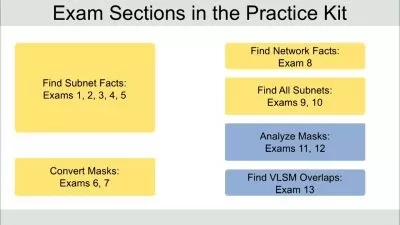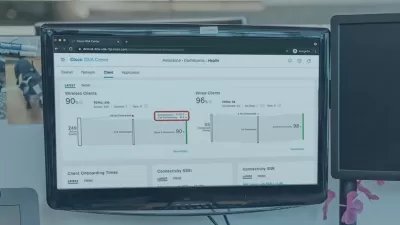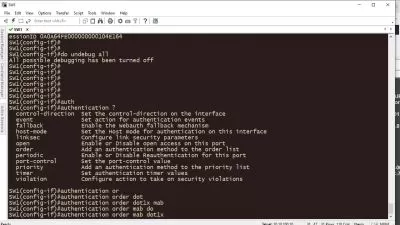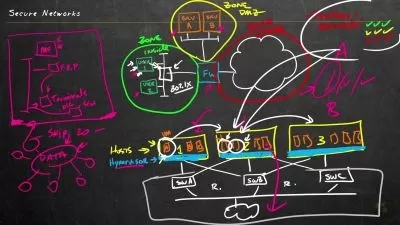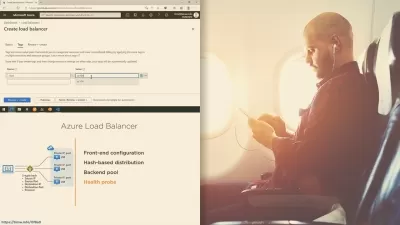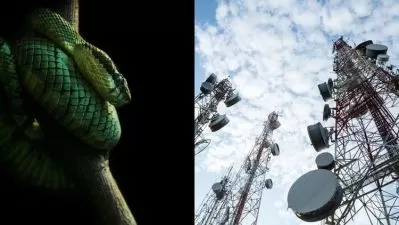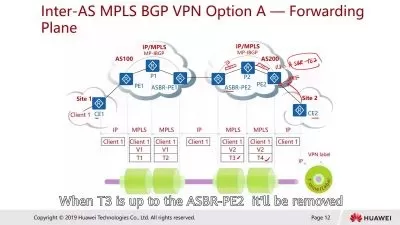Certified Wireless Network Administrator Online Training
Jeff Kish
38:09:31
Description
This entry-level Certified Wireless Network Administrator training covers the objectives in the CWNA-108 exam, which is the one required exam to earn the Certified Wireless Network Administrator certification.
For any network administrator whose career involves a focus on wireless technologies -- or may some day, Certified Wireless Network Administrator is the perfect certification. The CWNA cert is provided by Certified Wireless Network Professionals, and after taking the CWNA-108 exam, you'll know your way around every technology, device and problem a wireless network could throw at you.
More details
All of CWNP exams are vendor-neutral, which means you're not focusing on a particular brand or manufacturer, but on 802.11 technology. This is a huge plus for any administrator eager to learn about wireless technology generally rather than specific products.
For anyone who manages a wireless network, this wireless training can be used for CWNA-108 exam prep, onboarding new network administrators, individual or team training plans, or as a reference resource.
Certified Wireless Network Administrator: What You Need to Know
This Certified Wireless Network Administrator training covers CWNA-108 WLANs exam objectives, including these topics:
- Understanding radio frequency (RF) technologies and essentials
- Recognizing WLAN regulations, standard protocols, and devices
- Best practices for WLAN network architecture and design
- Enforcing WLAN security
- Troubleshooting and optimizing WLANs
Who Should Take Certified Wireless Network Administrator Training?
This Certified Wireless Network Administrator training is considered professional-level training, which means it was designed for network administrators with at least a year of experience with wireless network administration and experienced network administrators looking to validate their skills.
New or aspiring network administrators. If you're new to network administration, you should prepare yourself for the constant process of staying familiar with technologies. Sometimes, vendor-specific certifications will help you make the most out of one particular device or network. But at the start of your career, a vendor-agnostic certification like the Certified Wireless Network Administrator can give you a wide foundation from which to build a career in any direction you like.
Experienced network administrators. If you're a network administrator with several years of experience under your belt, the information on the CWNA-108 might already be familiar to you. On the other hand, if you haven't spent a lot of time with wireless networks, or you've continually figured things out by the seat of your pants, this Certified Wireless Network Administrator training can help put a stronger foundation under your feet and prepare you for more advanced wireless network administration.
User Reviews
Rating
Jeff Kish
Instructor's CoursesMy passion comes alive when a dry-erase marker is in my hand! I want learners to understand more than a list of bullet points — and gain a deeper comprehension of topics.
Jeff Kish has over 15 years of IT experience, focusing mainly on core infrastructure and data center technologies. He holds a number of Cisco certifications, including CCIEs in Routing and Switching and Data Center. He also focuses on network programmability and software-defined networking. Jeff has a degree in electrical engineering. When he’s not creating training, Jeff enjoys spending time with his family, writing fantasy novels, coding video games, and participating in the occasional Super Smash Bros tournament.
Certifications: Cisco CCIE Routing and Switching, Cisco CCIE Data Center, Cisco CCNP Data Center, Cisco CCNP Routing and Switching, Cisco CCDP, Cisco CCIP, Cisco CCNA Data Center, CCNA Routing and Switching, Cisco CCDA, Cisco DCUCD Specialist, Cisco DCUFD Specialist
Areas of expertise: Cisco, core infrastructure technology, data center technologies

CBT Nuggets
View courses CBT Nuggets- language english
- Training sessions 273
- duration 38:09:31
- Release Date 2023/04/26






